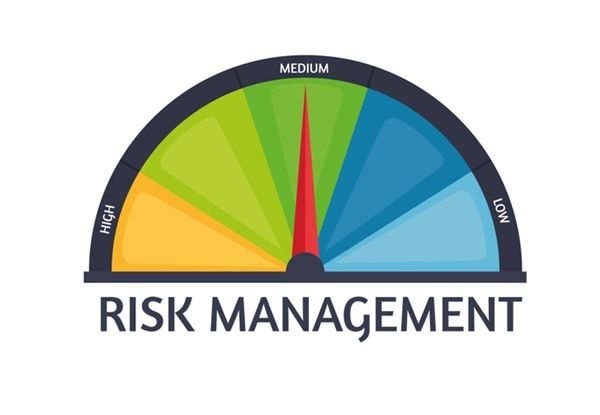Risk management is a critical component of any successful trading strategy. It is the process of identifying, analyzing, and mitigating potential losses to protect your capital while maximizing opportunities for gains. In trading, the ability to manage risk effectively can be the difference between long-term success and quick failure. This post explores key strategies and principles for managing risk in trading, offering practical advice that traders of all levels can apply to their portfolios and learn trading in a safe manner.
1. Understand and Set Risk Tolerance
Risk tolerance is the amount of loss a trader is willing to accept in pursuit of potential gains. It varies from person to person based on factors such as financial situation, trading experience, and emotional resilience. Understanding your risk tolerance is the first step toward creating a risk management plan that aligns with your trading goals.
Actionable Tip: Start by assessing your financial situation and how much capital you can afford to lose without affecting your lifestyle. Consider taking a risk tolerance questionnaire to quantify your comfort level with risk.
2. Position Sizing
Position sizing refers to determining the amount of capital allocated to a particular trade. Effective position sizing helps in controlling the amount of risk on each trade relative to your overall portfolio.
Actionable Tip: A common rule is to risk no more than 1-2% of your total capital on a single trade. This way, even a string of losses won’t decimate your portfolio.
3. Use Stop-Loss Orders
Stop-loss orders are predetermined levels at which a trader will exit a trade to prevent further losses. This is a key tool for limiting downside risk and is essential for protecting your capital.
Actionable Tip: Place stop-loss orders at a level where the technical setup of the trade would be considered invalid. Ensure that the stop-loss level is in line with your risk tolerance and position size.
4. Diversification
Diversification is the practice of spreading investments across various assets to reduce exposure to any single asset or market. It’s a way to minimize the impact of a poor-performing trade or market segment on your overall portfolio.
Actionable Tip: Invest in different asset classes (stocks, bonds, commodities) or different sectors within the same asset class to achieve a balanced portfolio. Avoid putting all your capital into a single trade or asset.
5. Leverage Control
Leverage allows traders to amplify their exposure to an asset without increasing their capital outlay. While leverage can enhance profits, it also magnifies losses, making it a double-edged sword.
Actionable Tip: Use leverage cautiously, especially if you’re a beginner. A good approach is to start with low or no leverage until you’re comfortable with the volatility and dynamics of the markets you’re trading.
6. Regularly Review and Adjust Your Strategy
Markets are dynamic, and what works today might not work tomorrow. Regularly reviewing and adjusting your trading strategy in response to changing market conditions is crucial for effective risk management.
Actionable Tip: Set aside time periodically to review your trades, assess your performance, and make necessary adjustments to your strategy. Consider backtesting your strategy against historical data to ensure it remains effective.
7. Keep Emotions in Check
Emotions like fear and greed can significantly impact trading decisions, often leading to poor risk management. Trading with a clear mind and a disciplined approach is essential for managing risk effectively.
Actionable Tip: Develop a trading plan that includes rules for entering and exiting trades, and stick to it. Avoid making impulsive decisions based on market noise or emotional reactions.
8. Educate Yourself Continuously
The financial markets are constantly evolving, and staying informed about the latest trends, strategies, and risk management techniques is crucial for long-term success. Continuous learning helps you adapt to new challenges and opportunities in the market.
Actionable Tip: Invest time in reading books, attending webinars, and following reputable sources in the trading community. Consider joining a trading group or forum where you can share experiences and learn from others.
9. Use Risk-Reward Ratios
The risk-reward ratio is a measure of the potential profit in a trade relative to the potential loss. A favorable risk-reward ratio ensures that the potential reward justifies the risk taken.
Actionable Tip: Aim for trades where the potential reward is at least twice the potential risk (a 2:1 ratio). This way, even if you win only half of your trades, you can still be profitable.
10. Plan for Worst-Case Scenarios
While it’s important to remain optimistic, planning for worst-case scenarios ensures that you’re prepared for unexpected market events. This could include significant market downturns, flash crashes, or sudden geopolitical events.
Actionable Tip: Consider using hedging strategies, such as options or inverse ETFs, to protect your portfolio against significant losses. Always have a contingency plan in place, including knowing when to step away from trading if things aren’t going as planned.
11. Avoid Overtrading
Overtrading occurs when a trader places too many trades in a short period, often out of impatience or the desire to recover losses quickly. This can lead to higher transaction costs and increased risk exposure.
Actionable Tip: Focus on quality over quantity. Stick to your trading plan and avoid entering trades without a clear setup or rationale. Patience is key to long-term success in trading.
12. Keep a Trading Journal
Maintaining a trading journal where you record your trades, strategies, and the rationale behind each decision is invaluable. It helps you track your performance, identify patterns, and learn from your mistakes.
Actionable Tip: Include details like entry and exit points, stop-loss levels, position size, and the outcome of the trade. Regularly review your journal to identify areas for improvement.
Conclusion
Effective risk management is not just about preventing losses—it’s about creating a sustainable trading strategy that allows for long-term growth. By understanding and applying these risk management principles, traders can protect their capital, minimize potential losses, and increase their chances of success in the markets. The key is to remain disciplined, stay informed, and continuously adapt to the ever-changing market environment. Trading is as much about managing risk as it is about seeking profit, and with the right approach, you can navigate the challenges and rewards that come with it.
| Disclaimer: Opinions expressed here are those of the writers and do not reflect those of Peacefmonline.com. Peacefmonline.com accepts no responsibility legal or otherwise for their accuracy of content. Please report any inappropriate content to us, and we will evaluate it as a matter of priority. |
Featured Video


















